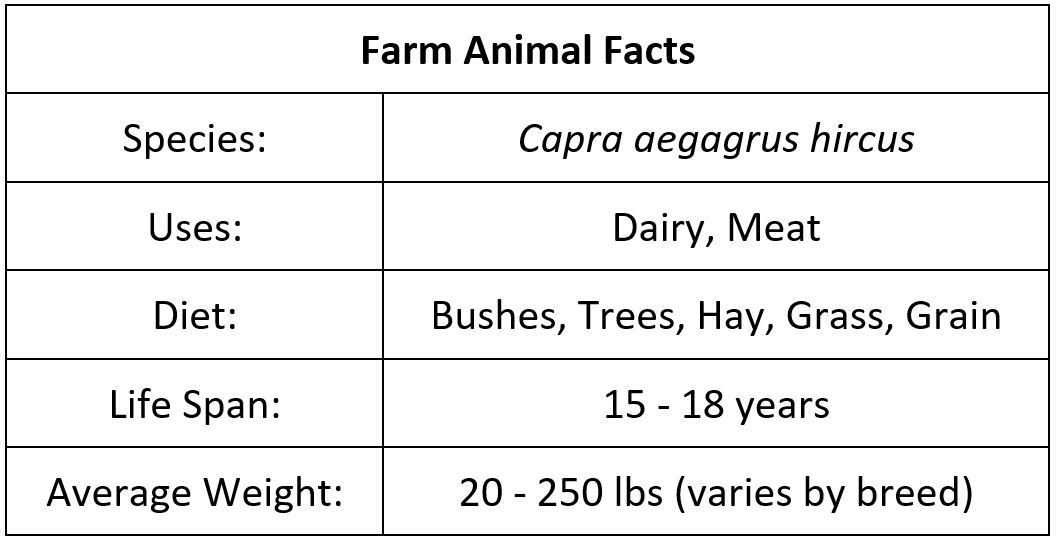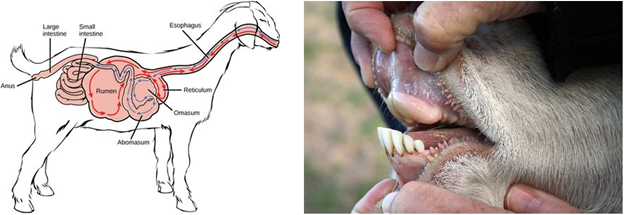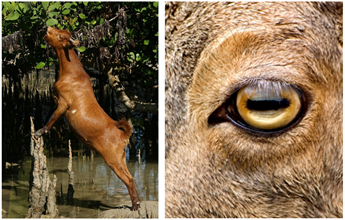

There are three types of domestic goats—those used for dairy, meat and fiber—and more than 200 recognized domestic breeds of goat. Four different breeds of goats live at Tradewinds Park: African Pygmy, Nubian, Boer, and Nigerian Dwarf.
Goats, along with sheep, were among the earliest domesticated animals. Goat remains have been found at sites in western Asia dated around 7,000 B.C.
Domestic goats are members of the Bovidae family, which includes sheep, cattle, antelope, buffalo and bison. Like cattle, goats have a ruminant digestive system, which includes four specialized stomach compartments that allow them to digest plants better than animals with a simple stomach. They also do not have front teeth (called incisors) on their upper jaws.

Goats require more nutrients than larger ruminants and are good browsers, feeding on a variety of shrubs, woody plants, weeds and briars. Unlike sheep and cattle, goats can also survive on bushes, trees, desert scrub and aromatic herbs.
Goats are very curious and like to investigate new items by sniffing and nibbling, but will not eat anything they find distasteful. Goats can climb, run, and crawl. Some breeds can jump to heights of more than 5 feet. Most goats will also stand on their back legs to reach tree branches and shrubs.

Goats' eyes have rectangular pupils, and it is believed that they have excellent night vision.
Most breeds of goats have horns, but many are dehorned at an early age to prevent injury to other goats and humans.
Goats cannot be herded as well as sheep can, and when chased will often disperse or face strangers and dogs head-on. Unlike sheep, goats easily revert to feral or wild condition given a chance. In fact, the only domestic species which will return to a wild state as rapidly as a goat is the domestic cat.
